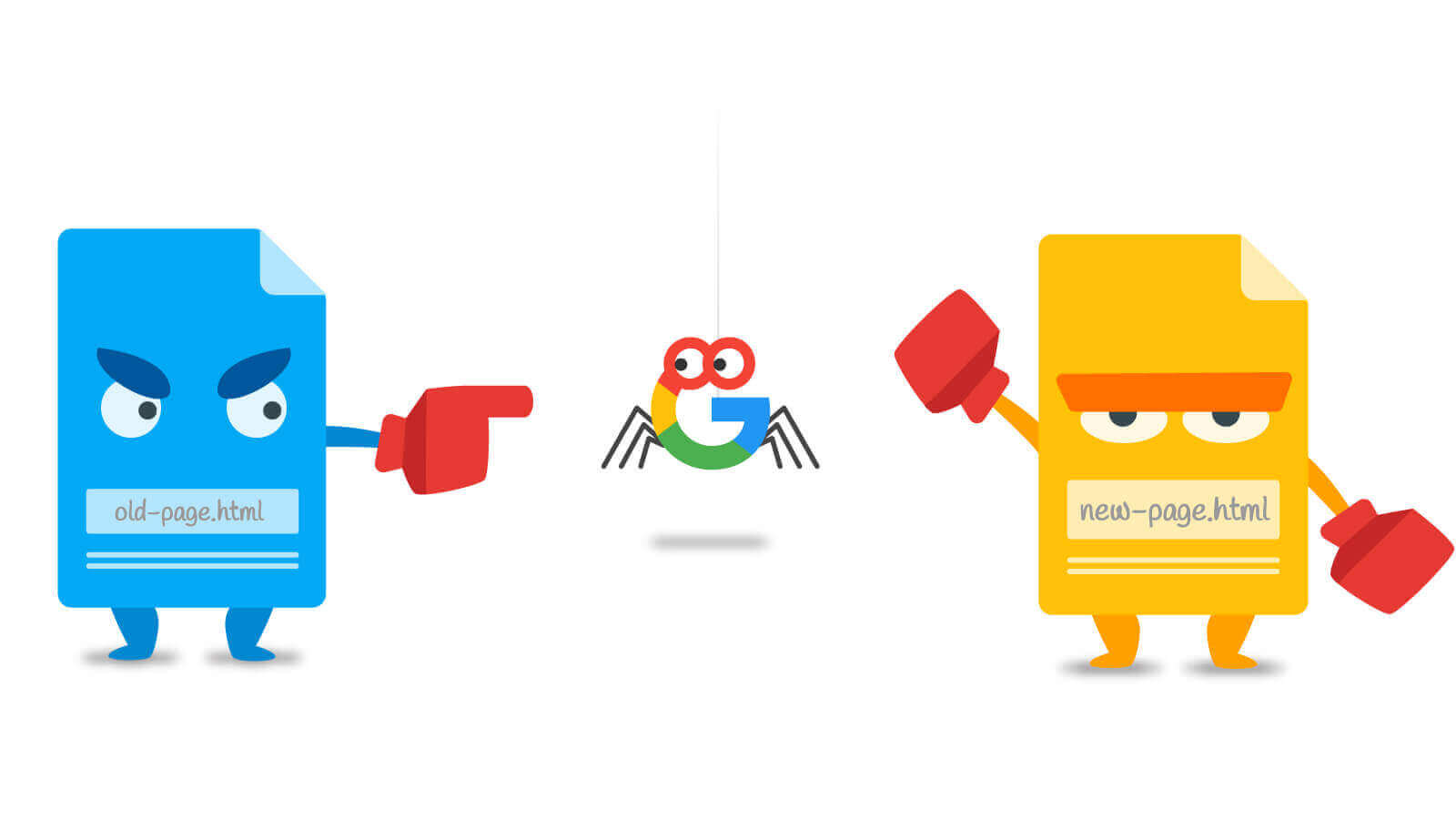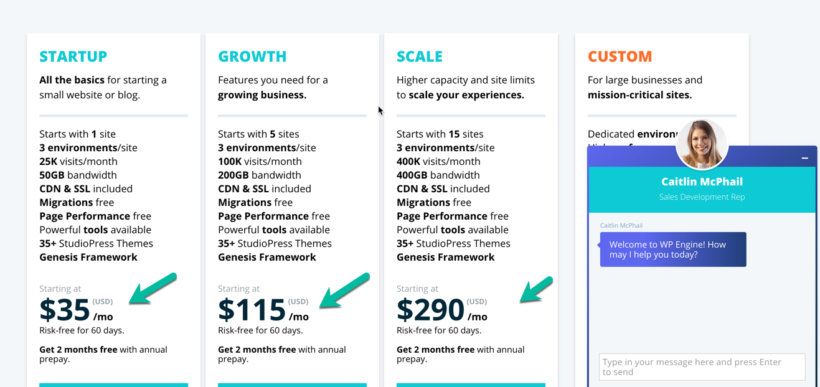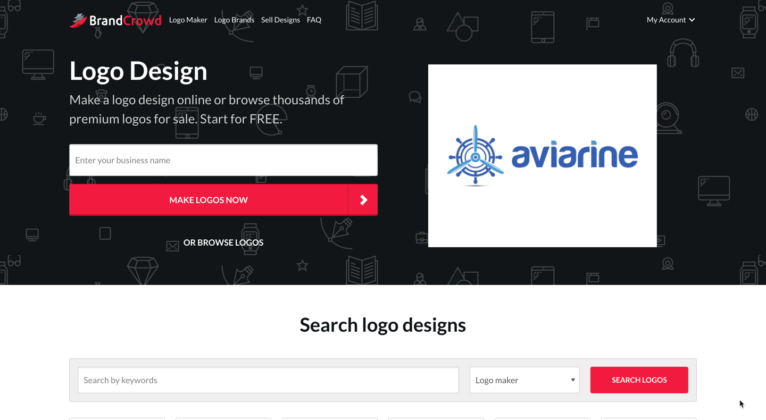

Editorial
If you have to pay attention to one online business story this year…
If there is one story in online business you have to pay real close attention to, it’s the one that’s been breaking over the past week with allegations against Google by an anonymous (alleged) former employee.
Hands down, if true, this would be one of the biggest internet scandals of all time but I digress, let’s get back to the basics.
An anonymous figure posted the following on Pastebin:
I am a former Google employee and I am writing this to leak information to the public of what I witnessed and took part in while being an employee. My position was to deal with AdSense accounts, more specifically the accounts of publishers (not advertisers). I was employed at Google for a period of several years in this capacity.
Having signed many documents such as NDA’s and non-competes, there are many repercussions for me, especially in the form of legal retribution from Google. I have carefully planned this leak to coincide with certain factors in Google such as waiting for the appropriate employee turn around so that my identity could not be discovered.
To sum it up for everyone, I took part in what I (and many others) would consider theft of money from the publishers by Google, and from direct orders of management. There were many AdSense employees involved, and it spanned many years, and I hear it still is happening today except on a much wider scale. No one on the outside knows it, if they did, the FBI and possibly IRS would immediately launch an investigation, because what they are doing is so inherently illegal and they are flying completely under the radar.
It began in 2009. Everything was perfectly fine prior to 2009, and in fact it couldn’t be more perfect from an AdSense employees perspective, but something changed.
Google Bans and Ban Criteria
Before December 2012:
In the first quarter of 2009 there was a “sit-down” from the AdSense division higher ups to talk about new emerging issues and the role we (the employees in the AdSense division needed to play. It was a very long meeting, and it was very detailed and intense. What it boiled down to was that Google had suffered some very serious losses in the financial department several months earlier. They kept saying how we “needed to tighten the belts” and they didn’t want it to come from Google employees pockets. So they were going to (in their words) “carry out extreme quality control on AdSense publishers”. When one of my fellow co-workers asked what they meant by that. Their response was that AdSense itself hands out too many checks each month to publishers, and that the checks were too large and that needed to end right away. Many of the employees were not pleased about this (like myself). But they were successful in scaring the rest into thinking it would be their jobs and their money that would be on the line if they didn’t participate. The meeting left many confused as to how this was going to happen. What did they mean by extreme quality control? A few other smaller meetings occur with certain key people in the AdSense division that furthered the idea and procedure they planned on implementing. There were lots of rumors and quiet talking amongst the employees, there was lots of speculations, some came true and some didn’t. But the word was that they were planning to cut off a large portion of publisher’s payments.
After that point there was a running gag amongst fellow co-workers where we would walk by each other and whisper “Don’t be evil, pft!” and roll our eyes.
What happened afterwards became much worse. Their “quality control” came into full effect. Managers pushed for wide scale account bans, and the first big batch of bans happened in March of 2009. The main reason, the publishers made too much money. But something quite devious happened. We were told to begin banning accounts that were close to their payout period (which is why account bans never occur immediately after a payout). The purpose was to get that money owed to publishers back to Google AdSense, while having already served up the ads to the public.
This way the advertiser’s couldn’t claim we did not do our part in delivering their ads and ask for money back. So in a sense, we had thousands upon thousands of publishers deliver ads we knew they were never going to get paid for.
Google reaped both sides of the coin, got money from the advertisers, used the publishers, and didn’t have to pay them a single penny. We were told to go and look into the publishers accounts, and if any publisher had accumulated earnings exceeding $5000 and was near a payout or in the process of a payout, we were to ban the account right away and reverse the earnings back. They kept saying it was needed for the company, and that most of these publishers were ripping Google off anyways, and that their gravy train needed to end. Many employees were not happy about this. A few resigned over it. I did not. I stayed because I had a family to support, and secondly I wanted to see how far they would go.
From 2009 to 2012 there were many more big batches of bans. The biggest of all the banning sessions occurred in April of 2012. The AdSense division had enormous pressure from the company to make up for financial losses, and for Google’s lack of reaching certain internal financial goals for the quarter prior. So the push was on. The employees felt really uneasy about the whole thing, but we were threatened with job losses if we didn’t enforce the company’s wishes. Those who voiced concerned or issue were basically ridiculed with “not having the company’s best interest in mind” and not being “team players”. Morale in the division was at an all-time low. The mood of the whole place changed quite rapidly. It no longer was a fun place to work.
The bans of April 2012 came fast and furious. Absolutely none of them were investigated, nor were they justified in any way. We were told to get rid of as many of the accounts with the largest checks/payouts/earnings waiting to happen. No reason, just do it, and don’t question it. It was heart wrenching seeing all that money people had earned all get stolen from them. And that’s what I saw it as, it was a robbery of the AdSense publishers. Many launched appeals, complaints, but it was futile because absolutely no one actually took the time to review the appeals or complaints. Most were simply erased without even being opened, the rest were deposited into the database, never to be touched again.
Several publishers launched legal actions which were settled, but Google had come up with a new policy to deal with situations such as that because it was perceived as a serious problem to be avoided. So they came up with a new policy.
After December 2012: The New Policy
The new policy; “shelter the possible problem makers, and fuck the rest” (those words were actually said by a Google AdSense exec) when he spoke about the new procedure and policy for “Account Quality Control”.
The new policy was officially called AdSense Quality Control Color Codes (commonly called AQ3C by employees). What it basically was a categorization of publisher accounts. Those publisher’s that could do the most damage by having their account banned were placed in a VIP group that was to be left alone. The rest of the publishers would be placed into other groupings accordingly. The new AQ3C also implemented “quality control” quotas for the account auditors, so if you didn’t meet the “quality control” target (aka account bans) you would be called in for a performance review. There were four “groups” publishers could fall into if they reached certain milestones.
They were:
Red Group: Urgent Attention Required
- Any AdSense account that reaches the $10,000/month mark is immediately flagged (unless they are part of the Green Group).
- In the beginning there were many in this category, and most were seen as problematic and were seen as abusing the system by Google. So every effort was taken to bring their numbers down.
- They are placed in what employees termed “The Eagle Eye”, where the “AdSense Eagle Eye Team” would actively and constantly audit their accounts and look for any absolute reason for a ban. Even if the reason was far-fetched, or unsubstantiated, and unprovable, the ban would occur. The “Eagle Eye Team” referred to a group of internal account auditors whose main role was to constantly monitor publisher’s accounts and sites.
- A reason has to be internally attached to the account ban. The problem was that notifying the publisher for the reason is not a requirement, even if the publisher asks. The exception: The exact reason must be provided if a legal representative contacts Google on behalf of the account holder.
- But again, if a ban is to occur, it must occur as close to a payout period as possible with the most amount of money accrued/earned.
Yellow Group: Serious Attention Required
- Any AdSense account that reaches the $5,000/month mark is flagged for review (unless they are part of the Green Group). All of the publisher’s site(s)/account will be placed in queue for an audit.
- Most of the time the queue is quite full so most are delayed their audit in a timely fashion. The second highest amount of bans occur at this level.
- A reason has to be internally attached to the account ban. Notifiying the publisher for the reason is not a requirement, even if the publisher asks. The exception: The exact reason must be provided if a legal representative contacts Google on behalf of the account holder. But again, if a ban is to occur, it must occur as close to a payout period as possible with the most amount of money accrued/earned.
Blue Group: Moderate Attention Required
- Any AdSense account that reaches the $1,000/month mark is flagged for possible review (unless they are part of the Green Group). Only the main site and account will be place in queue for what is called a quick audit. Most bans that occur happen at this level. Main reason is that a reason doesn’t have to be attached to the ban, so the employees use these bans to fill their monthly quotas. So many are simply a random pick and click.
- A reason does not have to be internally attached to the account ban. Notifying the publisher for the reason is not a requirement, even if the publisher asks. But again, if a ban is to occur, it must occur as close to a payout period as possible with the most amount of money accrued.
Green Group: VIP Status (what employees refer to as the “untouchables”)
- Any AdSense account associated with an incorporated entity or individual that can inflict serious damage onto Google by negative media information, rallying large amounts of anti-AdSense support, or cause mass loss of AdSense publisher support.
- Google employees wanting to use AdSense on their websites were automatically placed in the Green group. So the database contained many Google insiders and their family members. If you work or worked for Google and were placed in the category, you stayed in it, even if you left Google. So it included many former employees. Employees simply had to submit a form with site specific details and their account info.
- Sites in the Green Group were basically given “carte blanche” to do anything they wanted, even if they flagrantly went against the AdSense TOS and Policies. That is why you will encounter sites with AdSense, but yet have and do things completely against AdSense rules.
- Extra care is taken not to interrupt or disrupt these accounts.
- If an employee makes a mistake with a Green Level account they can lose their job. Since it seen as very grievous mistake.
New Policy 2012 Part 2:
Internal changes to the policy were constant. They wanted to make it more efficient and streamlined. They saw its current process as having too much human involvement and oversight. They wanted it more automated and less involved.
So the other part of the new policy change was to incorporate other Google services into assisting the “quality control” program. What they came up with will anger many users when they find out. It involved skewing data in Google Analytics. They decided it was a good idea to alter the statistical data shown for websites. It first began with just altering data reports for Analytics account holders that also had an AdSense account, but they ran into too many issues and decided it would be simpler just to skew the report data across the board to remain consistent and implement features globally. So what this means is that the statistical data for a website using Google Analytics is not even close to being accurate. The numbers are incredibly deflated. The reasoning behind their decision is that if an individual links their AdSense account and their Analytics account, the Analytics account can be used to deflate the earnings automatically without any human intervention. They discovered that if an individual had an AdSense account then they were also likely to use Google Analytics. So Google used it to their advantage.
This led to many publishers to actively display ads, without earning any money at all (even to this day). Even if their actual website traffic was high, and had high click-throughs the data would be automatically skewed in favor of Google, and at a total loss of publishers. This successfully made it almost impossible for anyone to earn amounts even remotely close what individuals with similar sites were earning prior to 2012, and most definitely nowhere near pre-2009 earnings.
Other policy changes also included how to deal with appeals, which still to this day, the large majority are completely ignored, and why you will rarely get an actual answer as to why your account was banned and absolutely no way to resolve it.
The BIG Problem (which Google is aware of)
There is an enormous problem that existed for a long time in Google’s AdSense accounts. Many of the upper management are aware of this problem but do not want to acknowledge or attempt to come up with a solution to the problem.It is regarding false clicks on ads. Many accounts get banned for “invalid clicks” on ads. In the past this was caused by a publisher trying to self inflate click-throughs by clicking on the ads featured on their website. The servers automatically detect self-clicking with comparison to IP addresses and other such information, and the persons account would get banned for invalid clicking.
But there was something forming under the surface. A competitor or malicious person would actively go to their competitor’s website(s) or pick a random website running AdSense and begin multiple-clicking and overclicking ads, which they would do over and over again. Of course this would trigger an invalid clicking related ban, mainly because it could not be proven if the publisher was actually behind the clicking. This was internally referred to as “Click-Bombing”. Many innocent publishers would get caught up in bans for invalid clicks which they were not involved in and were never told about.
This issue has been in the awareness of Google for a very long time but nothing was done to rectify the issue and probably never will be. Thus if someone wants to ruin a Google AdSense publishers account, all you would have to do is go to their website, and start click-bombing their Google Ads over and over again, it will lead the servers to detect invalid clicks and poof, they get banned. The publisher would be completely innocent and unaware of the occurrence but be blamed for it anyways.
Their BIG Fear
The biggest fear that Google has about these AdSense procedures and policies is that it will be publicly discovered by their former publishers who were banned, and that those publishers unite together and launch an class-action lawsuit.
They also fear those whose primary monthly earnings are from AdSense, because in many countries if a person claims the monthly amount to their tax agency and they state the monthly amount and that they are earning money from Google on a monthly basis, in certain nations technically Google can be seen as an employer. Thus, an employer who withholds payment of earnings, can be heavily fined by government bodies dealing with labor and employment. And if these government bodies dealing with labor and employment decide to go after Google, then it would get very ugly, very quickly ….. that is on top of a class-action lawsuit.
TechCrunch posted the Google rejoinder to the points made by anonymous:
“This description of our AdSense policy enforcement process is a complete fiction. The color-coding and ‘extreme quality control’ programs the author describes don’t exist. Our teams and automated systems work around the clock to stop bad actors and protect our publishers, advertisers and users.
All publishers that sign up for AdSense agree to the Terms and Conditions of the service and a set of policies designed to ensure the quality of the network for users, advertisers and other publishers. When we discover violations of these policies, we take quick action, which in some cases includes disabling the publisher’s account and refunding affected advertisers.”
To which the alleged leaker responds:
I have communications. I have documents, I have files, I have lists, and I have names. I have all of it. Like I said from the beginning, I have carefully waited and carefully planned everything out.
So you ask why haven’t I released it? The answer, if I release everything I have now, it will give Google too many possible avenues to discover my identity. Also doing thing such as publicly naming people and giving Google a pre-emptive look at what I have will only make them prepare for the class action lawsuit that will hit them. They won’t be caught off guard and they will have time to come up with excuses and explanations in attempts to rid themselves of this issue. I do not want that to happen. I want the people to win. I want those who had money they earned, that was stolen from them, to get the right to fight for it on equal grounding.
That is why I have chosen to only release it to the legal representatives of the class action lawsuit against Google in regards to AdSense. (…)
If several months go by and no class action lawsuit manifests, then I will have to selectively release a few key pieces of evidence to the public at large.
The information and evidence I have is extensive and quite detailed, it will also paint a very different picture of what Google is really like to the public.
Now let me state this plainly here – THIS IS ALL VERY MURKY and NO ALLEGATIONS HAVE BEEN PROVEN and this may all be a hoax.
What it has done though, is open up a really big can of worms.
More on Monday…
Digital Marketing Training
13 Steps To Building A Profitable High Traffic Technology Blog – Part five – WordPress Hosting
This is part five of my blueprint that will help you begin the process of building a high traffic profitable technology blog.

This is the fifth post in the series.
In part one, I talked about some of my experiences with some of the successful high traffic websites I actually built.
In part two, I shared a little about my belly of the whale strategy, a methodology I use to identify potential software niches to get into.
In part three, I talked about the importance of putting together a baby business plan.
In part four, I described the importance of not wasting time on a logo.
This is part five of the blueprint that will help you begin the process of building a high traffic profitable technology blog.
Today I want to recommend WordPress Hosts to you.
What is a WordPress Host?
A WordPress Host or hosting company is simply the company that hosts your WordPress website files. There are a ton of companies out there that do web hosting but here is everything you need to know in a concise package.
To cut a long story short, there are 2 ways to deal with hosting for WordPress if you’re new to building a business.
- The dumb way – get regular hosting and figure out all the tweaking and maintenance.
- The easy and efficient way – with managed hosting.
What is WordPress Managed Hosting?
Managed hosting is exactly what it sounds like – hosting that is managed for you. God I wish I knew this when I started 15 years ago.
You see, a WordPress website has more parts that need maintenance than most people understand.
When you’re building an online business, you need to worry about the following:
- The WordPress installation
- WordPress version updates
- WordPress environments
- The database
- FTP/SFTP
- PHP
- The theme
- MySQL
- Plugins
- Performance
- The CDN (if you’re savvy enough to manually install one)
- Hacking and security
- Images
and more..
When I started out building websites, I had to learn how to manage all this stuff at once and ended up paying contractors to handle one thing here, then another thing there etc. etc.
It adds up and even worse…
It’s a massive distraction from your business!
Most people don’t want to know this stuff and more importantly, don’t need to know all this stuff.
That’s where a good WordPress Managed Host comes in.
The role of a good WordPress Managed Hosting company
It’s real simple, a good WordPress Managed Hosting company will have one goal and one goal alone – to keep you protected from all the bullshit you don’t have to worry about.
They help you with the install, troubleshooting becomes their problem 100%, they worry about performance, security is all their business, on and on it goes.
At the end of the day, they allow you to focus on your business.
While there are a few good hosting companies out there, I only have one recommendation.
WP Engine – Link here
I’ve been on their platform for years and can’t say without equivocation, I couldn’t stay in business without their company.
They are reasonably priced, they have 24/7 chat support, they have the most pleasant staff in the industry and they look after their customers. In addition, their control panel makes site management on the back end a breeze.
You can learn more here.
A managed WordPress company allows you to stay focused on your core business and that is invaluable.
It’s really that simple.
Head to their site and sign up for a reasonably priced hosting package and you’re in good shape.
In the next article, I’ll show you what WordPress Themes I recommend for you to get started quickly.
Enjoy!
Digital Marketing Training
13 Steps To Building A Profitable High Traffic Technology Blog – Part Four – your logo
This is part four of my blueprint that will help you begin the process of building a high traffic profitable technology blog.

This is the fourth post in the series.
In part one, I talked about some of my experiences with some of the successful high traffic websites I actually built.
In part two, I shared a little about my belly of the whale strategy, a methodology I use to identify potential software niches to get into.
In part three, I talked about the importance of putting together a baby business plan.
This is part four of the blueprint that will help you begin the process of building a high traffic profitable technology blog.
Today I want to teach you how to get a logo for your business.
What is a logo?
Simply put, a logo is a symbol or other design adopted by an organization to identify its products, uniform, vehicles, etc. You are obviously familiar with some of the more famous ones.
The importance of a good logo
Logos are relatively important for an online business but their value is misunderstood by most online entrepreneurs. A lot of people starting out in this business obsess about the logo.
- What color should it be?
- What size?
- What tagline?
- What image?
- Vertical or horizontal?
I brought a friend along to help you.
As my friend the Rock just told you – NONE of this matters.
If that sounds like anathema to you I’m wagering that this is your first Rodeo and you still have time for all that quaint nonsense.
Let me be clear. At this stage in the game, your logo does not matter one bit.
What this does not mean
- Doesn’t mean you should have an ugly logo.
- Doesn’t mean you should pay ZERO attention to it.
- Doesn’t mean that you should not have one at all.
What this does mean
- Does mean that you should acknowledge this task is low priority.
- Does mean that you should spend no more than 2 days on this task.
- Does mean that after 2 days, your logo concept should be “good enough”
- Does mean that this is a task that you should come back to.
So this begs the question..
Should I buy a logo or design one myself?
Great question – easy answer.
If you have the skills, put one together in less than 48 hours. If not, buy one.
This begs the next question..
How much should I pay for a logo?
Great question – yet again another easy answer.
50 dollars.
No more than 50 bucks is what you should spend on a logo because quite frankly, anything more is a waste of money.
This begs yet again the next question..
Where should I get this new logo designed?
I would have given you a different answer a month ago but I found a really cool place where you can actually get your logo design for cheap.
It’s called BrandCrowd.
This is a really cool service where you can buy or alter really cool logos for reasonable prices.
While you can spend more than $1000 to buy a logo, that would be dumb. Pick something cool, modify it and keep it moving.
I did this in 3 hours for another site I’m building – https://www.laptopvideoreviews.com.
This took 3 hours and cost me $45. Logo done. I recommend BrandCrowd because it’s really easy to use and simple to get a good logo done.
Summary
When you start out in this business, a logo can drive you CRAZY and you can spend months trying to get the right colors and branding and sizes etc.
FOCUS ON YOUR BUSINESS!
Don’t get distracted because here’s the secret – you can always double back and get a better logo later. It’s better to have a viable business and a crappy logo than a beautiful logo and a failed business.
It’s simple.
In the next article, I’ll show you what WordPress Themes I recommend for you to get started quickly.
Enjoy!
Editorial
Who approved never get Hulu as an ad slogan?
I’ve seen some DUMB ad campaigns in my life but Never Get Hulu is by far the worst one I have ever seen in my life.

I was watching the Emmys last week and then an ad came on.
It had a ton of celebrities who were serious and telling me to listen and pay attention.
They start to talk somewhat comedically about a bunch of things I should never do – never fly first class, never get a king size bed, never get a walk in closet etc etc.
At this point, there are hints of comedy creeping in…
Until the final punch line “..and most importantly Never Get Hulu”.
My wife and I are marketing professionals and immediately looked at each other thinking the same exact thing.
Who at Hulu gave the green light to this ad?
Why would you get people’s attention and use the words “Never” and your brand name in the same sentence? From a marketing perspective this seems extremely stupid.
Yes, it gets people like me writing about this and talking about it and sharing the ad. Got it.
HOWEVER, it imprints very negative keywords next to your brand name into people’s psyche’s forever.
Never Get Hulu.
I absolutely don’t get it but hey what do I know, maybe they know something I don’t so I should probably take their advice.
I DEFINITELY won’t get Hulu.
-

 Website Performance6 years ago
Website Performance6 years agoWebsite Optimization Tips – Optimizing the Order of Styles and Scripts
-

 Web Content7 years ago
Web Content7 years agoHow to test a copywriter
-

 Website Performance6 years ago
Website Performance6 years agoWordPress Performance Tips – Enable Keep Alive
-

 Web Content10 years ago
Web Content10 years ago7 Basic Principles Of Good Writing
-

 URL Redirects6 years ago
URL Redirects6 years agoSpeeding Up WordPress – Avoid Landing Page Redirects
-

 Digital Marketing Training6 years ago
Digital Marketing Training6 years ago13 Steps To Building A Profitable High Traffic Technology Blog – Part Four – your logo
-

 Digital Marketing Training5 years ago
Digital Marketing Training5 years ago13 Steps To Building A Profitable High Traffic Technology Blog – Part five – WordPress Hosting
-

 Evaluation10 years ago
Evaluation10 years agoFind The Traffic Of Any Website With SimilarWeb



















1 Comment